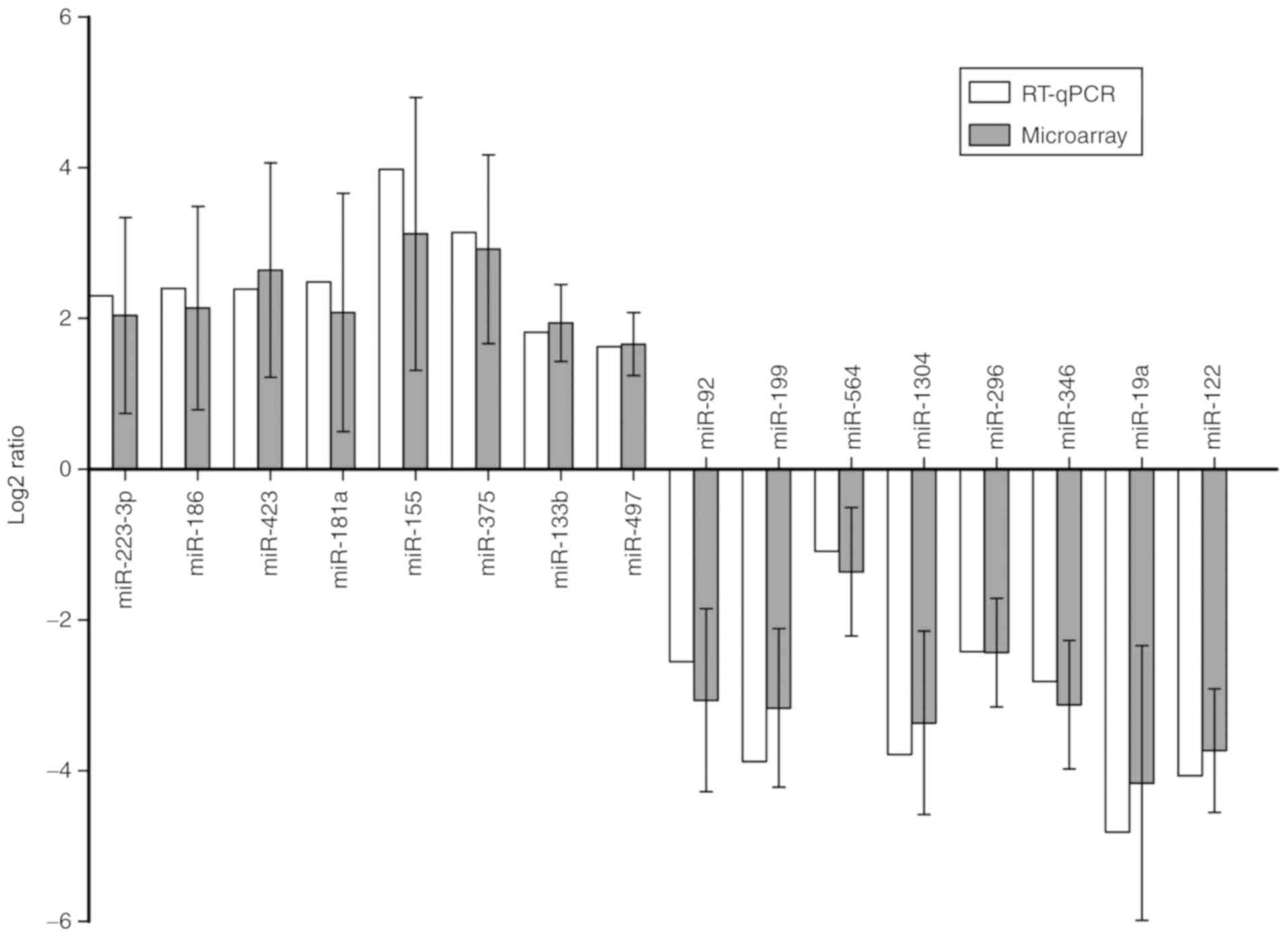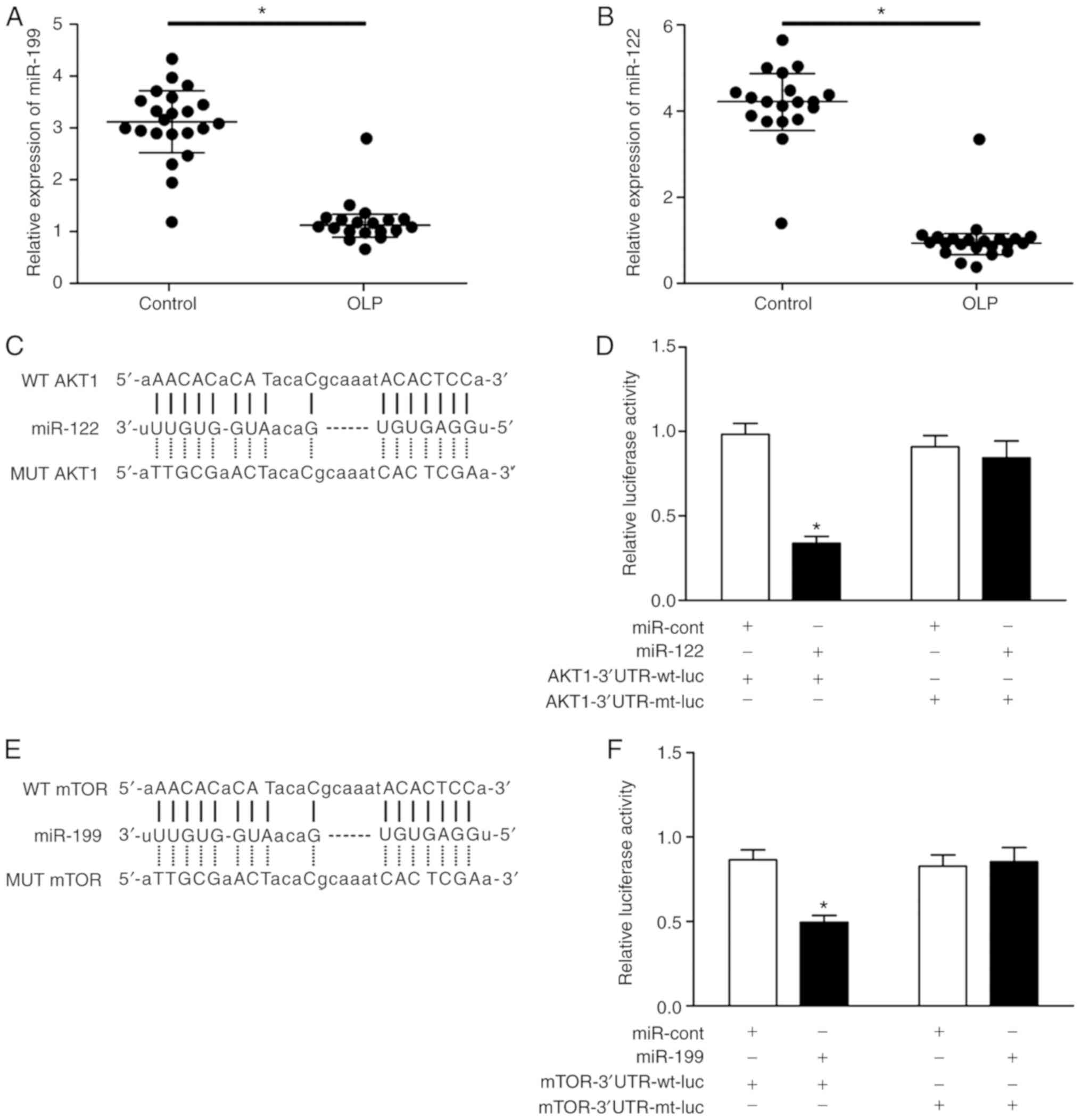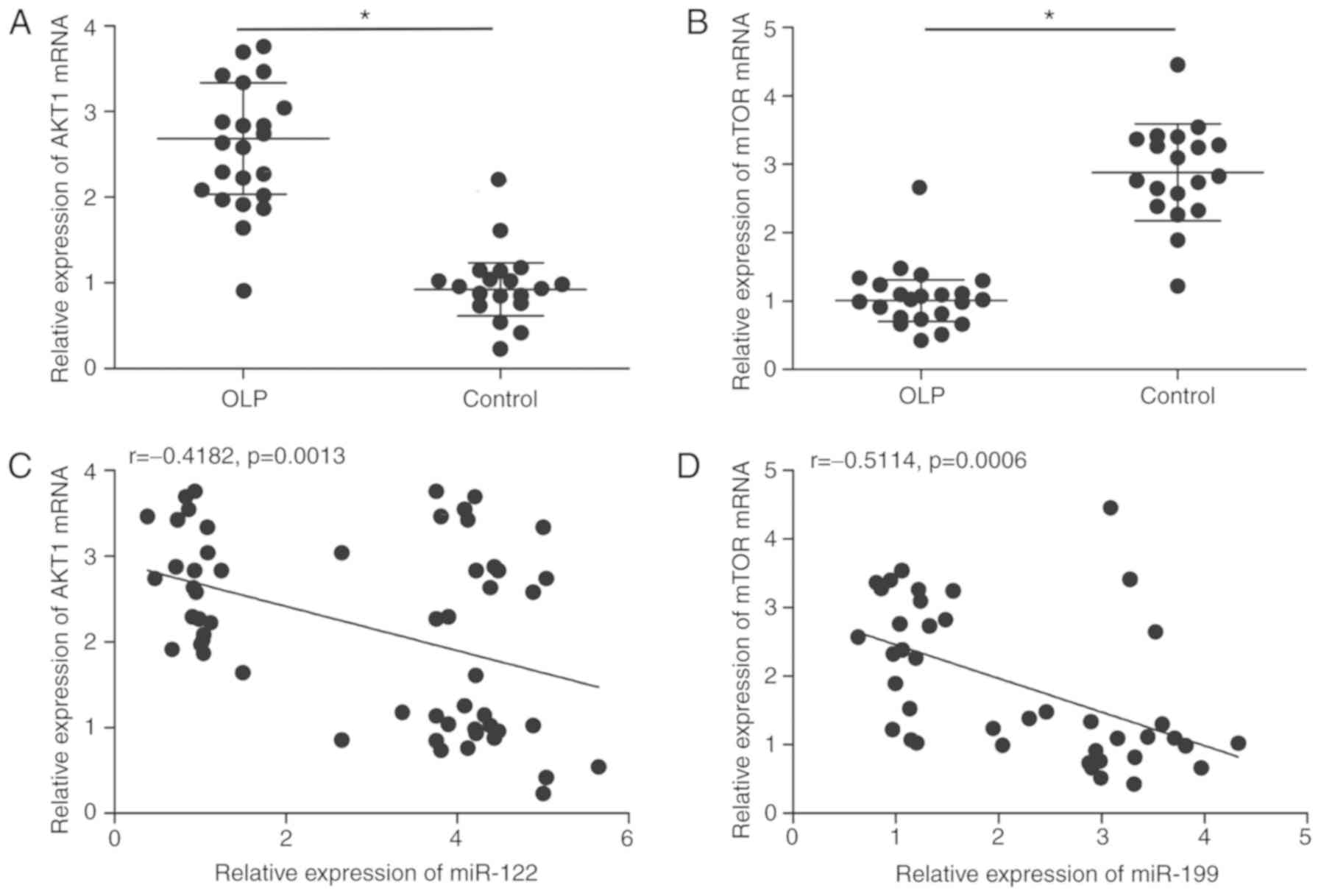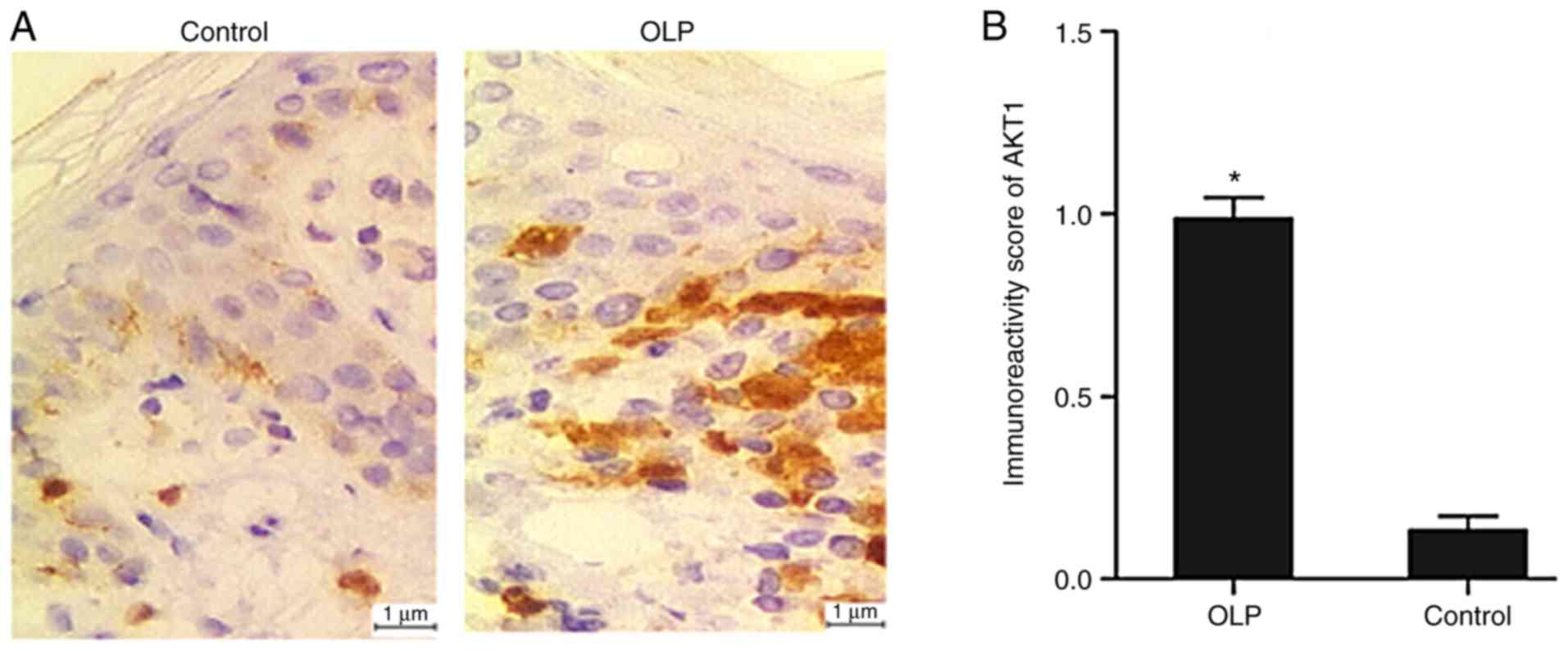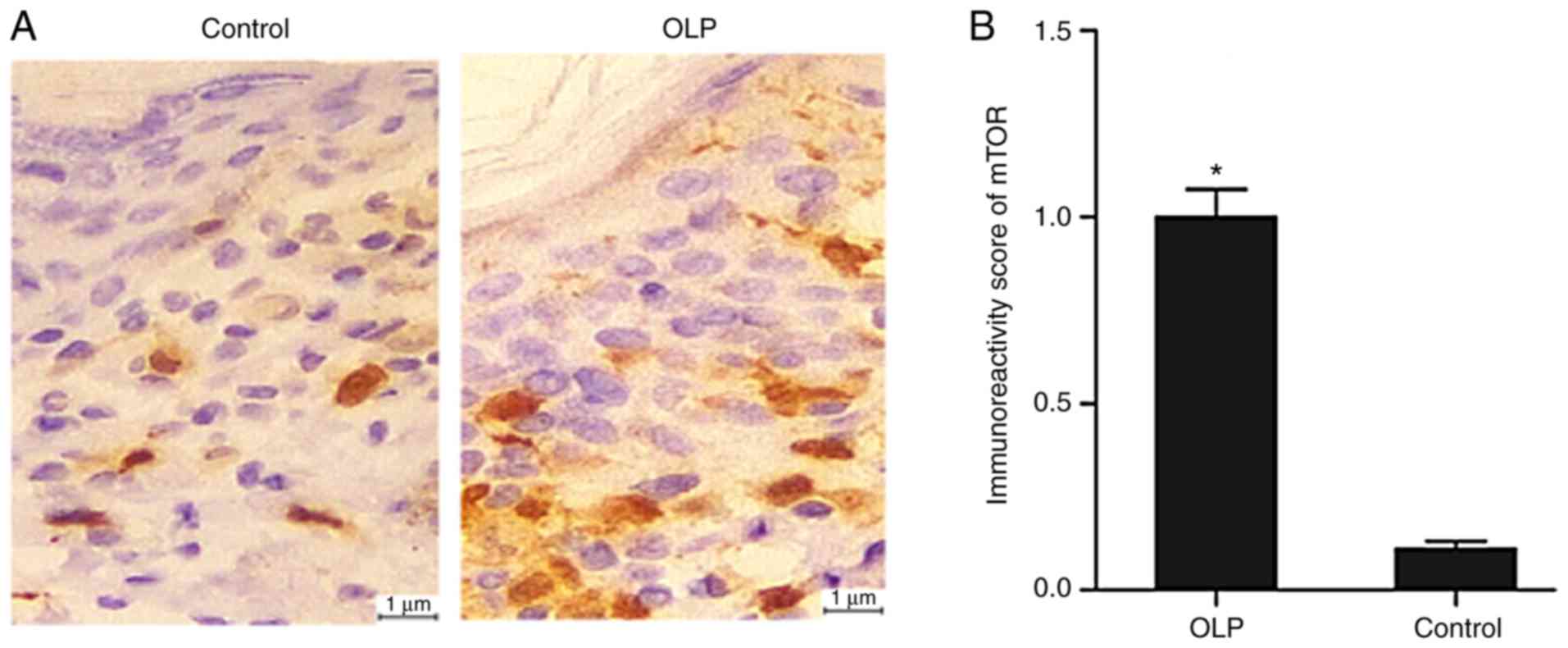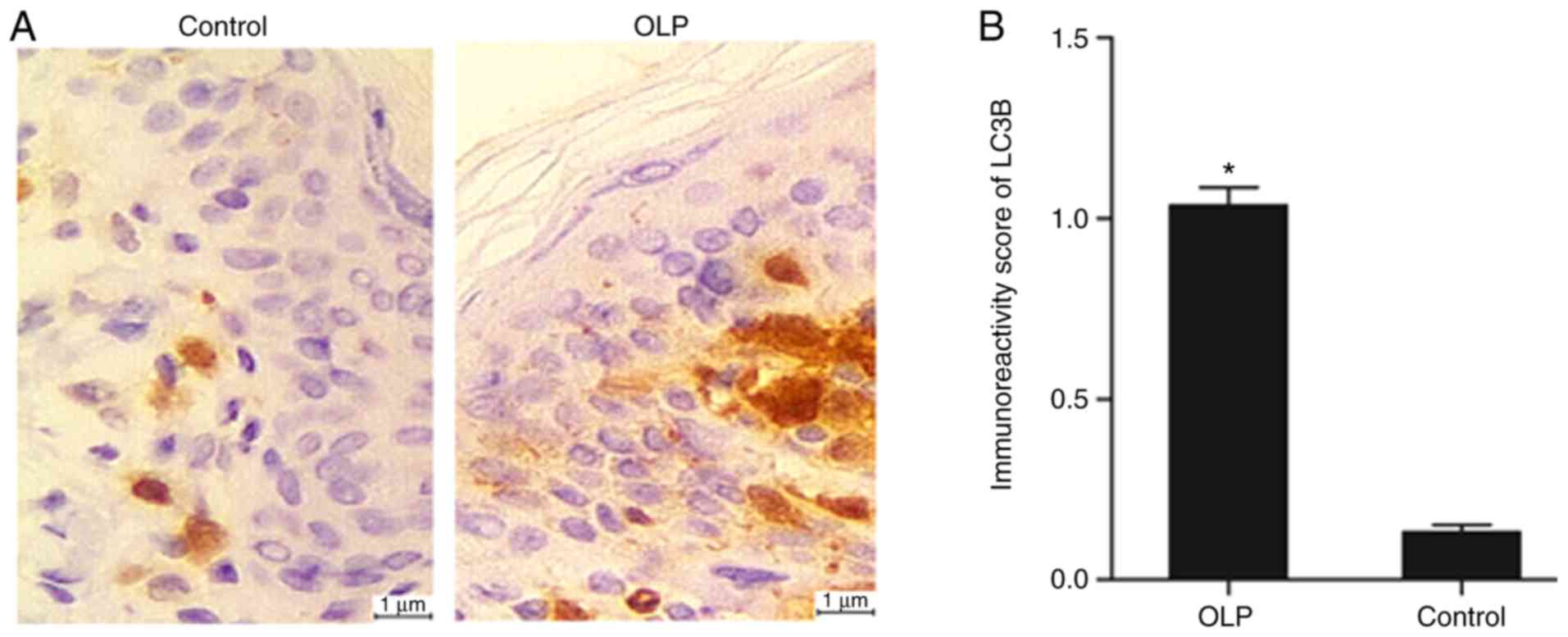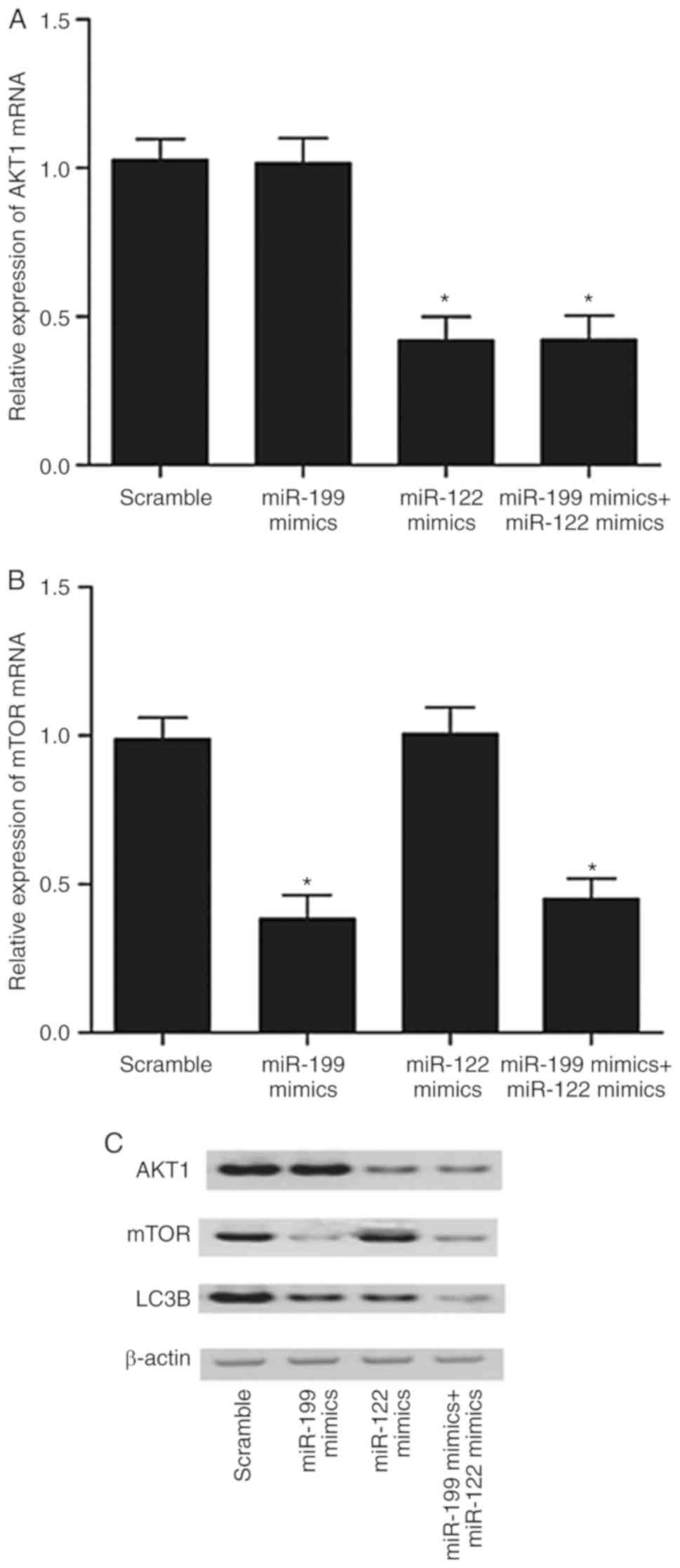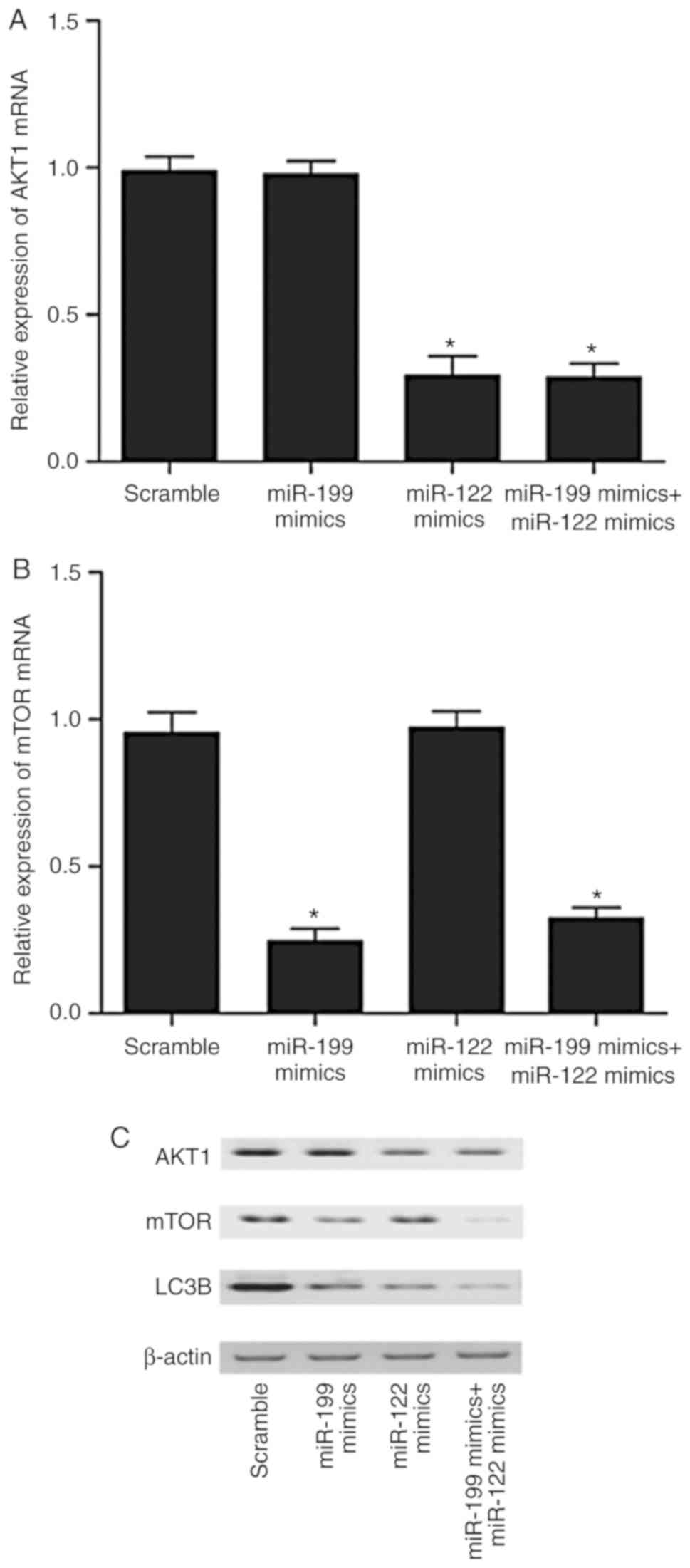|
1
|
Farhi D and Dupin N: Pathophysiology,
etiologic factors, and clinical management of oral lichen planus,
part I: Facts and controversies. Clin Dermatol. 28:100–108. 2010.
View Article : Google Scholar : PubMed/NCBI
|
|
2
|
Silverman S Jr, Gorsky M and Lozada-Nur F:
A prospective follow-up study of 570 patients with oral lichen
planus: Persistence, remission, and malignant association. Oral
Surg Oral Med Oral Pathol. 60:30–34. 1985. View Article : Google Scholar : PubMed/NCBI
|
|
3
|
Kovacs JR, Li C, Yang Q, Li G, Garcia IG,
Ju S, Roodman DG, Windle JJ, Zhang X and Lu B: Autophagy promotes
T-cell survival through degradation of proteins of the cell death
machinery. Cell Death Differ. 19:144–152. 2012. View Article : Google Scholar :
|
|
4
|
Tan YQ, Zhang J, Du GF, Lu R, Chen GY and
Zhou G: Altered autophagy-associated genes expression in T cells of
oral lichen planus correlated with clinical features. Mediators
Inflamm. 2016:48673682016. View Article : Google Scholar : PubMed/NCBI
|
|
5
|
Hay N and Sonenberg N: Upstream and
downstream of mTOR. Genes Dev. 18:1926–1945. 2004. View Article : Google Scholar : PubMed/NCBI
|
|
6
|
Wong E and Cuervo AM: Autophagy gone awry
in neurodegenerative diseases. Nat Neurosci. 13:805–811. 2010.
View Article : Google Scholar : PubMed/NCBI
|
|
7
|
Manning BD and Cantley LC: AKT/PKB
signaling: Navigating downstream. Cell. 129:1261–1274. 2007.
View Article : Google Scholar : PubMed/NCBI
|
|
8
|
Lum JJ, DeBerardinis RJ and Thompson CB:
Autophagy in metazoans: Cell survival in the land of plenty. Nat
Rev Mol Cell Biol. 6:439–448. 2005. View
Article : Google Scholar : PubMed/NCBI
|
|
9
|
Prodromidis G, Nikitakis NG and Sklavounou
A: Immunohistochemical analysis of the activation status of the
Akt/mTOR/pS6 signaling pathway in oral lichen planus. Int J Dent.
2013:7434562013. View Article : Google Scholar : PubMed/NCBI
|
|
10
|
Gonzalez-Moles MA, Scully C and
Gil-Montoya JA: Oral lichen planus: Controversies surrounding
malignant transformation. Oral Dis. 14:229–243. 2008. View Article : Google Scholar : PubMed/NCBI
|
|
11
|
Roopashree MR, Gondhalekar RV, Shashikanth
MC, George J, Thippeswamy SH and Shukla A: Pathogenesis of oral
lichen planus-a review. J Oral Pathol Med. 39:729–734. 2010.
View Article : Google Scholar : PubMed/NCBI
|
|
12
|
Ambros V, Lee RC, Lavanway A, Williams PT
and Jewell D: MicroRNAs and other tiny endogenous RNAs in C.
elegans. Curr Biol. 13:807–818. 2003. View Article : Google Scholar : PubMed/NCBI
|
|
13
|
Krek A, Grün D, Poy MN, Wolf R, Rosenberg
L, Epstein EJ, MacMenamin P, da Piedade I, Gunsalus KC, Stoffel M
and Rajewsky N: Combinatorial microRNA target predictions. Nat
Genet. 37:495–500. 2005. View
Article : Google Scholar : PubMed/NCBI
|
|
14
|
Rana S, Gupta R, Singh S, Mohanty S, Gupta
K and Kudesia M: Localization of T-cell subsets in cutaneous lichen
planus: An insight into pathogenetic mechanism. Indian J Dermatol
Venereol Leprol. 76:707–709. 2010. View Article : Google Scholar : PubMed/NCBI
|
|
15
|
Zhang N, Zhang J, Tan YQ, Du GF, Lu R and
Zhou G: Activated Akt/mTOR-autophagy in local T cells of oral
lichen planus. Int Immunopharmacol. 48:84–90. 2017. View Article : Google Scholar : PubMed/NCBI
|
|
16
|
Livak KJ and Schmittgen TD: Analysis of
relative gene expression data using real-time quantitative PCR and
the 2(-Delta Delta C(T)) method. Methods. 25:402–408. 2001.
View Article : Google Scholar
|
|
17
|
Münz C: Enhancing immunity through
autophagy. Annu Rev Immunol. 27:423–449. 2009. View Article : Google Scholar
|
|
18
|
Li C, Capan E, Zhao Y, Zhao J, Stolz D,
Watkins SC, Jin S and Lu B: Autophagy is induced in CD4+ T cells
and important for the growth factor-withdrawal cell death. J
Immunol. 177:5163–5168. 2006. View Article : Google Scholar : PubMed/NCBI
|
|
19
|
Wu D, Huang HJ, He CN and Wang KY:
MicroRNA-199a-3p regulates endometrial cancer cell proliferation by
targeting mammalian target of rapamycin (mTOR). Int J Gynecol
Cancer. 23:1191–1197. 2013. View Article : Google Scholar : PubMed/NCBI
|
|
20
|
Wang B, Wang H and Yang Z: MiR-122
inhibits cell proliferation and tumorigenesis of breast cancer by
targeting IGF1R. PLoS One. 7:e470532012. View Article : Google Scholar : PubMed/NCBI
|
|
21
|
Wang Y, Xing QF, Liu XQ, Guo ZJ, Li CY and
Sun G: MiR-122 targets VEGFC in bladder cancer to inhibit tumor
growth and angiogenesis. Am J Transl Res. 8:3056–3066.
2016.PubMed/NCBI
|
|
22
|
O' Neill C: PI3-kinase/Akt/mTOR signaling:
Impaired on/off switches in aging, cognitive decline and
Alzheimer's disease. Exp Gerontol. 48:647–653. 2013. View Article : Google Scholar : PubMed/NCBI
|
|
23
|
Chong ZZ, Shang YC and Maiese K:
Cardiovascular disease and mTOR signaling. Trends Cardiovasc Med.
21:151–155. 2011. View Article : Google Scholar
|
|
24
|
Habib SL and Liang S: Hyperactivation of
Akt/mTOR and deficiency in tuberin increased the oxidative DNA
damage in kidney cancer patients with diabetes. Oncotarget.
5:2542–2550. 2014. View Article : Google Scholar : PubMed/NCBI
|
|
25
|
Edlind MP and Hsieh AC: PI3K-AKT-mTOR
signaling in prostate cancer progression and androgen deprivation
therapy resistance. Asian J Androl. 16:378–386. 2014. View Article : Google Scholar : PubMed/NCBI
|
|
26
|
Martínez-Martínez E, Jurado-López R,
Valero-Muñoz M, Bartolomé MV, Ballesteros S, Luaces M, Briones AM,
López-Andrés N, Miana M and Cachofeiro V: Leptin induces cardiac
fibrosis through galectin-3, mTOR and oxidative stress: Potential
role in obesity. J Hypertens. 32:1104–1114; discussion 1114. 2014.
View Article : Google Scholar : PubMed/NCBI
|
|
27
|
Gouras GK: mTOR: at the crossroads of
aging, chaperones, and Alzheimer's disease. J Neurochem.
124:747–748. 2013. View Article : Google Scholar : PubMed/NCBI
|
|
28
|
Sarkar S: Regulation of autophagy by
mTOR-dependent and mTOR-independent pathways: Autophagy dysfunction
in neuro-degenerative diseases and therapeutic application of
autophagy enhancers. Biochem Soc Trans. 41:1103–1130. 2013.
View Article : Google Scholar : PubMed/NCBI
|
|
29
|
Roos WP, Thomas AD and Kaina B: DNA damage
and the balance between survival and death in cancer biology. Nat
Rev Cancer. 16:20–33. 2016. View Article : Google Scholar
|
|
30
|
Chen J, Ghorai MK, Kenney G and Stubbe J:
Mechanistic studies on bleomycin-mediated DNA damage: Multiple
binding modes can result in double-stranded DNA cleavage. Nucleic
Acids Res. 36:3781–3790. 2008. View Article : Google Scholar : PubMed/NCBI
|
|
31
|
Bellacosa A, Kumar CC, Di Cristofano A and
Testa JR: Activation of AKT kinases in cancer: Implications for
therapeutic targeting. Adv Cancer Res. 94:29–86. 2005. View Article : Google Scholar : PubMed/NCBI
|
|
32
|
Sarbassov DD, Guertin DA, Ali SM and
Sabatini DM: Phosphorylation and regulation of Akt/PKB by the
rictor-mTOR complex. Science. 307:1098–1101. 2005. View Article : Google Scholar : PubMed/NCBI
|
|
33
|
Hosoi T, Hyoda K, Okuma Y, Nomura Y and
Ozawa K: Akt up- and down-regulation in response to endoplasmic
reticulum stress. Brain Res. 1152:27–31. 2007. View Article : Google Scholar : PubMed/NCBI
|
|
34
|
Fayard E, Tintignac LA, Baudry A and
Hemmings BA: Protein kinase B/Akt at a glance. J Cell Sci.
118:5675–5678. 2005. View Article : Google Scholar : PubMed/NCBI
|
|
35
|
Liu Y and Levine B: Autosis and autophagic
cell death: The dark side of autophagy. Cell. Death Differ.
22:367–376. 2015. View Article : Google Scholar
|
|
36
|
Degtyarev M, De Mazière A, Orr C, Lin J,
Lee BB, Tien JY, Prior WW, van Dijk S, Wu H, Gray DC, et al: Akt
inhibition promotes autophagy and sensitizes PTEN-null tumors to
lysoso-motropic agents. J Cell Biol. 183:101–116. 2008. View Article : Google Scholar : PubMed/NCBI
|
|
37
|
Simpson DR, Mell LK and Cohen EE:
Targeting the PI3K/AKT/mTOR pathway in squamous cell carcinoma of
the head and neck. Oral Oncol. 51:291–298. 2015. View Article : Google Scholar
|
|
38
|
Wang J, Luo H, Xiao Y and Wang L: miR-125b
inhibits keratinocyte proliferation and promotes keratinocyte
apoptosis in oral lichen planus by targeting MMP-2 expression
through PI3K/Akt/mTOR pathway. Biomed Pharmacother. 80:373–380.
2016. View Article : Google Scholar : PubMed/NCBI
|
|
39
|
He C and Klionsky DJ: Regulation
mechanisms and signaling pathways of autophagy. Annu Rev Genet.
43:67–93. 2009. View Article : Google Scholar : PubMed/NCBI
|



